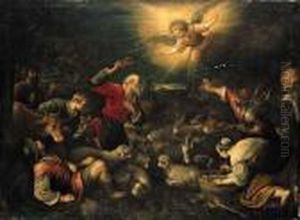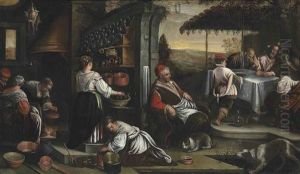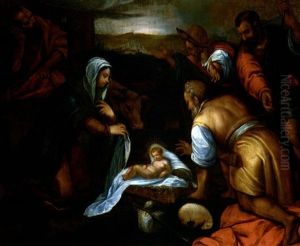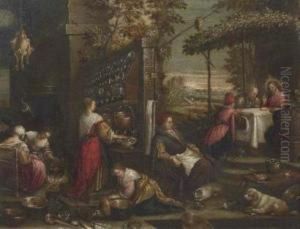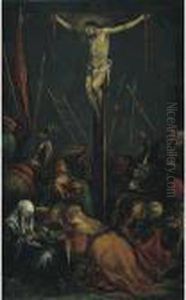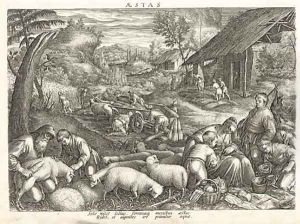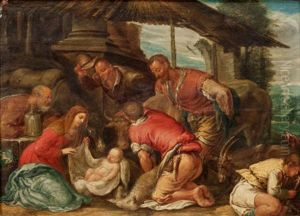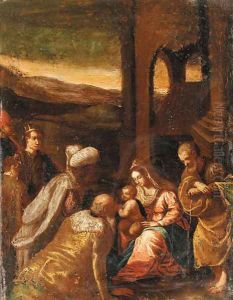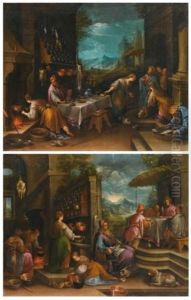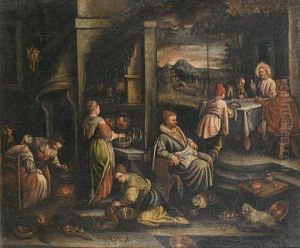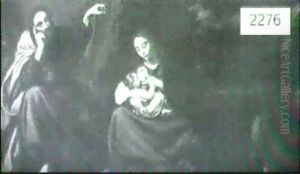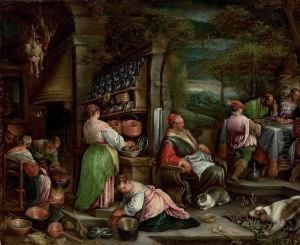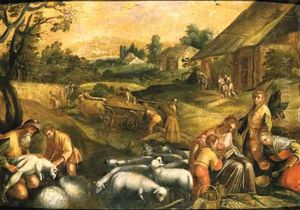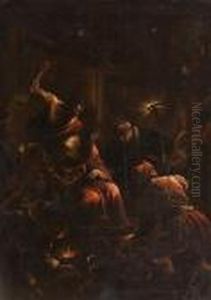Jacopo Bassano (Jacopo da Ponte) Paintings
Jacopo Bassano, also known as Jacopo da Ponte, was an Italian painter who was born around 1510 in Bassano del Grappa, Veneto, a region in northeastern Italy. He was the son of a provincial painter, Francesco da Ponte the Elder, and his family name 'da Ponte' derives from the town where he was born. Jacopo is better known by the name of his native town, Bassano, which he often included in his signature on his works.
Jacopo Bassano was an important figure in the Renaissance period, and he is particularly notable for his innovative use of light and color, his dynamic compositions, and his detailed rural scenes which included realistic portrayals of animals and rustic life. He was profoundly influenced by the work of the Venetian masters, especially Titian and Paolo Veronese, but he developed his own distinctive style that anticipated aspects of Baroque art.
Bassano's early work shows the influence of his father, but as he matured, he incorporated the Mannerist style which was gaining popularity at the time. His ability to fuse the Venetian colorism with the Mannerist compositional style set him apart from his contemporaries. He ran a successful workshop in Bassano del Grappa, where he produced religious paintings, altarpieces, and private commissions for patrons, often portraying biblical and mythological subjects with an emphasis on pastoral scenes.
Some of his most famous works include 'The Adoration of the Shepherds', 'The Last Supper', 'The Flight into Egypt', and 'The Good Samaritan'. His paintings are characterized by their vibrant colors, dramatic lighting effects, and robust figures, and they reflect his deep understanding of the natural world.
Jacopo Bassano's four sons also became painters and continued his legacy in the local tradition. Despite his success, Bassano never left his hometown for long periods, unlike many artists of the time who sought fame in larger cities. He died in Bassano del Grappa in 1592. His work had a significant influence on the development of landscape painting and was admired for its innovative approach to naturalism. Today, his art is celebrated for its originality and its profound impact on the Venetian school and beyond.


